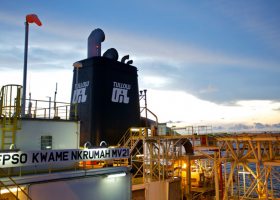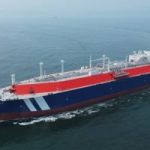Ideal Employer Survey: The Top 10 National Oil Companies
As the term implies, a national oil company (NOC) is an organization somehow linked to a country’s government. Unlike a multinational or international oil company (IOC) whose shareholders hail from the private sector, a government partially or fully owns a NOC.
The profit motive does matter to NOCs, but these entities’ ties to the public sector also dictate that they achieve other goals. For instance, some NOCs function as extensions of governments to provide jobs, fund social programs and subsidize citizens’ energy costs. Other NOCs, though not official units of their host governments, count governments as well as private investors as shareholders. Such enterprises attempt to create value for shareholders and support other, national objectives advocated by political elites. NOCs with varying ownership structures and missions can be found in Rigzone’s 2018 Ideal Employer Survey.
Which NOCs enjoy the highest esteem among oil and gas professionals? Participants in Rigzone’s survey – 6,621 respondents from 2,990 different companies in more than 100 countries – have determined which NOCs would be best to work for. Individuals completing the survey, which Rigzone conducted from June to November 2017, responded to a variety of questions given current market conditions.
What follows is a countdown of the top 10 highest-scoring NOCs. Note that all figures reflect the most recent publicly available information that Rigzone was able to obtain from sources such as company websites and annual reports.
10. Gazprom
Established in 1993, Russian Joint Stock Company Gazprom reports that it produces 11 percent of the world’s gas output. At the end of 2016, owners of the Moscow-based company included:
Federal Agency for State Property Management, Russian Federation (38.37 percent)
Rosneftegaz (10.97 percent)*
Rosgazifikatsiya (0.89 percent)*
American Depository Receipt (ADR) holders (28.86 percent)
Others (22.91 percent)
*Controlled by Russia’s government
Read Also. List Of Oil and Gas Exploration and Production Companies In Tanzania
The chief executive of 467,400-employee Gazprom is Alexey Miller, Chairman of the Management Committee. As of 2016, Gazprom’s reserves (proven and probable) included 23,855.1 billion cubic meters (Bcm) of natural gas, 1,018.9 million tons of gas condensate and 1,378.7 million tons of oil. In the same year, the company produced 419.1 Bcm of natural and associated gas, 15.9 million tons of gas condensate and 39.3 million tons of oil.
9. Ecopetrol
Known for its green iguana mascot, Bogota-based Empresa Colombiana de Petroleos (Ecopetrol S.A.) is Colombia’s NOC. More than 88-percent owned by the Colombian government, Ecopetrol also counts pension funds and other investors as shareholders. CEO Felipe Bayón Pardo leads the approximately 8,700-employee-strong company, which was established in 1951.
In 2017, Ecopetrol boasted proven hydrocarbon reserves of 1.66 billion barrels-equivalent and average production of 715,000 barrels of oil equivalent (boe) per day. During the same period, the company processed 346,000 barrels (bbl) of crude oil per day at its refineries in Cartagena and Barrancabermeja. Outside of Colombia, the company holds offshore exploratory acreage in Mexico and the U.S. Gulf of Mexico.
8. Kuwait Oil Co.
One of two Kuwait Petroleum Corp. subsidiaries to make Rigzone’s list of top NOCs, Kuwait Oil Co. (KOC) traces its origins to 1934 and focuses on exploration, drilling and production of oil and natural gas within Kuwait. Moreover, state-owned KOC’s activities include storing crude oil and delivering it to tanker vessels for export.
Led by CEO Jamal Abdul Aziz Jaafar, KOC produced an average of nearly 2.9 million barrels of crude oil per day and more than 1.7 million standard cubic feet per day (MMscfd) of associated and non-associated gas in 2015-2016. In addition, the company has set a goal of increasing its crude production capacity to 3.65 million barrels per day (MMbpd) by 2020.
Headquartered in the city of Al-Ahmadi, KOC reported a total employee headcount of 9,818 at the end of the 2015/2016 fiscal year.
7. Petroleum Development Oman
Formed in 1937, Petroleum Development Oman (PDO) employs just under 8,800 individuals. Led by Managing Director Raoul Restucci, the Muscat-based NOC is 60-percent owned by Oman’s government. Other PDO owners include Shell (34 percent), Total (4 percent) and Partex (2 percent).
PDO in 2016 reported production of 600,000 bpd crude oil, 81,000 bpd condensate, and 80 million cubic meters per day of natural gas. In addition to sourcing energy from the ground, PDO is also relying on a resource from above. The company’s Miraah solar energy venture with GlassPoint Solar will produce steam for thermal enhanced oil recovery, according to PDO.
6. China National Offshore Oil Corp. (CNOOC)
China’s largest offshore oil and gas producer, CNOOC also operates in more than 40 countries and regions. The Beijing-based NOC, established in 1982 and headed by CEO Yang Hua, had 106,000 employees at the end of 2016. That year, it reported 76.97 million tons crude oil production, 24.5 Bcm of natural gas production and 51.2 million tons of refining capacity. The People’s Republic of China’s Assets Supervision and Administration Commission operates state-owned CNOOC.
5. Qatar Petroleum
Qatar occupies an area smaller than Connecticut. Thanks in part to Qatar Petroleum (QP), however, the tiny Arabian Peninsula country’s impact on the global oil and gas industry could be called “Texas-sized.” Formed in 1974, the Doha-based NOC produces oil and gas from onshore and offshore acreage. Most noteworthy is QP’s North Field in the Persian Gulf.
Boasting 900 trillion cubic feet of recoverable natural gas, North is the world’s largest non-associated gas reservoir, according to QP. The company, led by CEO Saad Sherida Al-Kaabi, exports much of its North production as liquefied natural gas (LNG) through its Qatargas subsidiary. In fact, Qatargas is the world’s top LNG producer and – as the International Gas Union observes – Qatar exports more LNG than any other country.
4. Abu Dhabi National Oil Co. (ADNOC)
Already a significant downstream player with 922,000 bpd of refining capacity, ADNOC wants to elevate its downstream profile. The state-owned company, established in 1971, has adopted a downstream growth strategy that aims to create the world’s largest integrated refining and chemicals site at Ruwais, UAE by 2025.
To be sure, the downstream is not ADNOC’s sole focus. The company produces approximately 3 MMbpdand more than 9.8 billion cubic feet of raw gas per day. In all, the NOC’s holdings encompass 18 different companies and subsidiaries. Sultan Ahmed Al Jaber serves as ADNOC’s chief executive.
3. Kuwait National Petroleum Corp. (KNPC)
The domestic downstream unit of state-owned Kuwait Petroleum Corp. (KPC), KNPC garnered the number four ranking in Rigzone’s breakdown of Ideal NOC employers. Headquartered in Al-Ahmadi south of Kuwait City, KNPC can process up to 936,000 bbl of crude oil per day at three refineries.
The 58-year-old company, headed by CEO Mohammad Ghazi Al-Mutairi, also runs a four-train LNG plant at its Mina Al-Ahmadi (MAA) refinery that can produce approximately 2.5 billion standard cubic feet per day (scfpd) of LNG. KNPC is adding a fifth train at MAA that will raise liquefaction capacity to nearly 3.3 billion scfpd.
2. Petroliam Nasional Berhad (PETRONAS)
Headquarters of Malaysia’s integrated oil and gas company Petronas, the twin Petronas Towers, leave a distinctive mark on Kuala Lumpur’s skyline. Petronas also is making a growing impression on the oil and gas industry, both in Malaysia and abroad.
Established in 1974 and present in more than 60 countries, Petronas in 2016 reported daily production of nearly 2.4 million boe. Currently able to process 570,000 bpd of crude oil at refineries in Malaysia and South Africa, Petronas aims to add 300,000 bpd of new capacity by 2020 through its Refinery and Petrochemical Integrated Development (RAPID) project on Johor Island. The company also is a major player in Asia’s LNG sector, having deployed noteworthy projects such as the PETRONAS LNG Complex in Malaysia’s Sarawak state and the floating LNG facility PFLNG Satu in the South China Sea. In addition, Petronas is developing its second floating LNG vessel: PFLNG Dua.
Tan Sri Wan Zulkiflee Wan Ariffin serves as Petronas’ CEO.
1. Saudi Aramco
Topping the list of NOCs in Rigzone’s Ideal Employer Survey ranking for the second consecutive year is Saudi Arabian Oil Co., better known as Saudi Aramco. Established in 1933 and fully owned by the Kingdom of Saudi Arabia (KSA), Saudi Aramco reported the following production figures in 2016:
- 10.5 MMbpd of crude oil
- 8.3 billion scfpd of sales natural gas
- 920 million scfpd of ethane
- 1.4 MMbpd natural gas liquids
During the same period, Saudi Aramco reported reserves of 260.8 billion barrels of crude oil and condensate and 298.7 trillion standard cubic feet of natural gas. Also, its total share of refining capacity at domestic and international facilities amounted to 3.1 MMbpd in 2016.
CEO Amin H. Nasser is leading Saudi Aramco at a time when the KSA is trying to open state-owned enterprises to private investors. Along those lines, the Kingdom is seeking to launch an initial public offering (IPO) of a minority of Saudi Aramco’s shares to investors to raise capital for growth projects. At this writing, when the approximately 65,000-employee company’s IPO will occur is uncertain.
Credit. Rigzone




